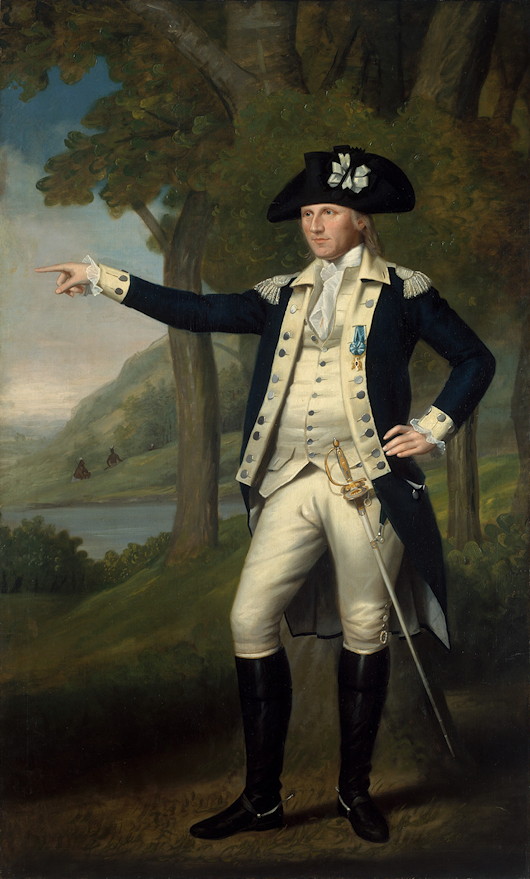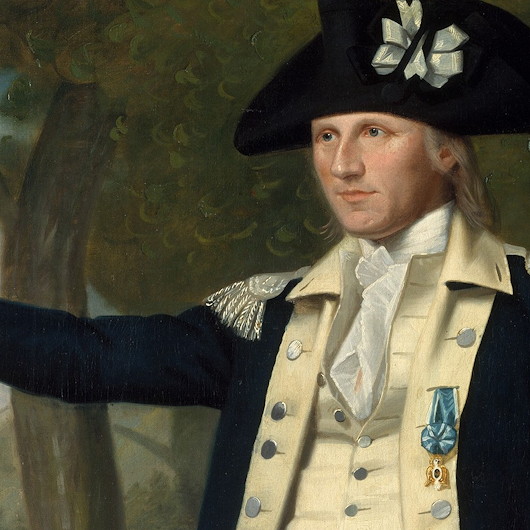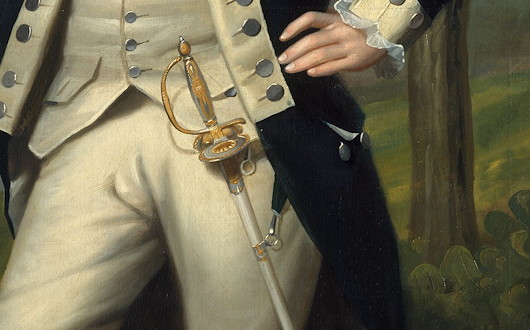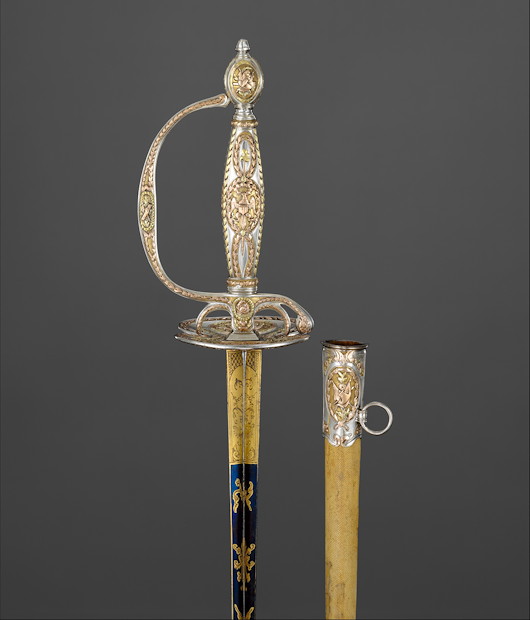
About Andrew Cusack
 Writer, web designer, etc.; born in New York; educated in Argentina, Scotland, and South Africa; now based in London.
Writer, web designer, etc.; born in New York; educated in Argentina, Scotland, and South Africa; now based in London. read more
News
Blogs
Reviews & Periodicals
Arts & Design
World
France
Mitteleuropa
Knickerbockers
Argentina
The Levant
Africa
Cape of Good Hope
Netherlands
Scandinavia
Québec
India
Muscovy
Germany
Academica

In one of the galleries of the Metropolitan Museum’s American wing, behind the Tuckahoe-marble façade of the old Assay Office (moved here from Wall Street), hangs this portrait of Col. Marinus Willett of the Continental Army’s 5th New York Regiment.
Born in 1740, the second of thirteen children, Willett attended King’s College before being commissioned a lieutenant in a New York provincial regiment during the Seven Years’ War (or French and Indian War as it’s known more locally).
When internecine conflict broke out in 1775, Marinus sided with the revolutionaries of the Provincial Congress and was commissioned a captain in the 1st New York Regiment, being promoted a year later to lieutenant colonel in the 3rd New York Regiment, and finally colonel of the 5th New York Regiment in 1779. After the war he twice served as Sheriff of the County of New York (the island of Manhattan) and was Mayor of New York from 1807 to 1808.
In 1791 Col Willett commissioned a portrait from the self-taught American painter Ralph Earl who, despite being the son of a colonel in the revolutionary forces, was such an ardent loyalist that he abandoned his wife and children when he fled to England in 1778. There he honed his skills working in the London studio of Benjamin West and exhibted at the Royal Academy before moving to Norwich where he became a provincial portraitist of note.

Earl went back across the Atlantic in 1785, two years after George III recognised the independence of the thirteen American states. A minor debt landed him in the debtors prison in 1786, whence he first came to the attention of Col. Willett, a member of the Society for the Relief of Distressed Debtors. Earl’s time in prison proved productive, as he gained several commissions from the Society’s patrons, including the serving Mayor, the Trial Recorder, and later the Sheriff (Willett).
Despite his earlier ambiguous loyalties, he found work painting the likenesses of several officers of the victorious Continental Army. Most were members of the Society of the Cincinnati, the association of long-serving officers of the Continental and French forces which continues today as America’s oldest and preeminent hereditary society. Indeed Col. Willett is depicted by Earl with the eagle of the Cincinnati dangling from this left breast. Earl’s portraits of Captain John Pratt and Baron von Steuben similarly depict the subjects wearing the eagle of the Society.

Splendidly rendered too is the ceremonial smallsword which was presented to Col. Willett by the Continental Congress in honour of his actions against the royal forces at Fort Stanwix. The representatives had voted Willett this honour in 1777 but craftsmen of sufficient skill were not available in North America, so the commission went to C. Liger, swordmakers in the Rue Coquilliere in what is now the 1er arrondissement of Paris.
General Henry Knox presented the sword to Colonel Willett in 1786 and it survives to this day in good condition (see below). Willett’s descendant George Willett Van Nest donated the sword to the Metropolitan Museum of Art in 1916, along with Ralph Earl’s portrait of the Colonel.

Search
Instagram: @andcusack
Click here for my Instagram photos.Most Recent Posts
- Patrick in Parliament March 18, 2024
- Articles of Note: 13 March 2024 March 13, 2024
- Cambridge March 9, 2024
- Taken on Trust March 4, 2024
- Immanuel on the Green March 2, 2024
Most Recent Comments
Book Wishlist
Monthly Archives
Categories



A beautiful swagger portrait, and how wonderful to see the decoration of the Cincinnati worn.